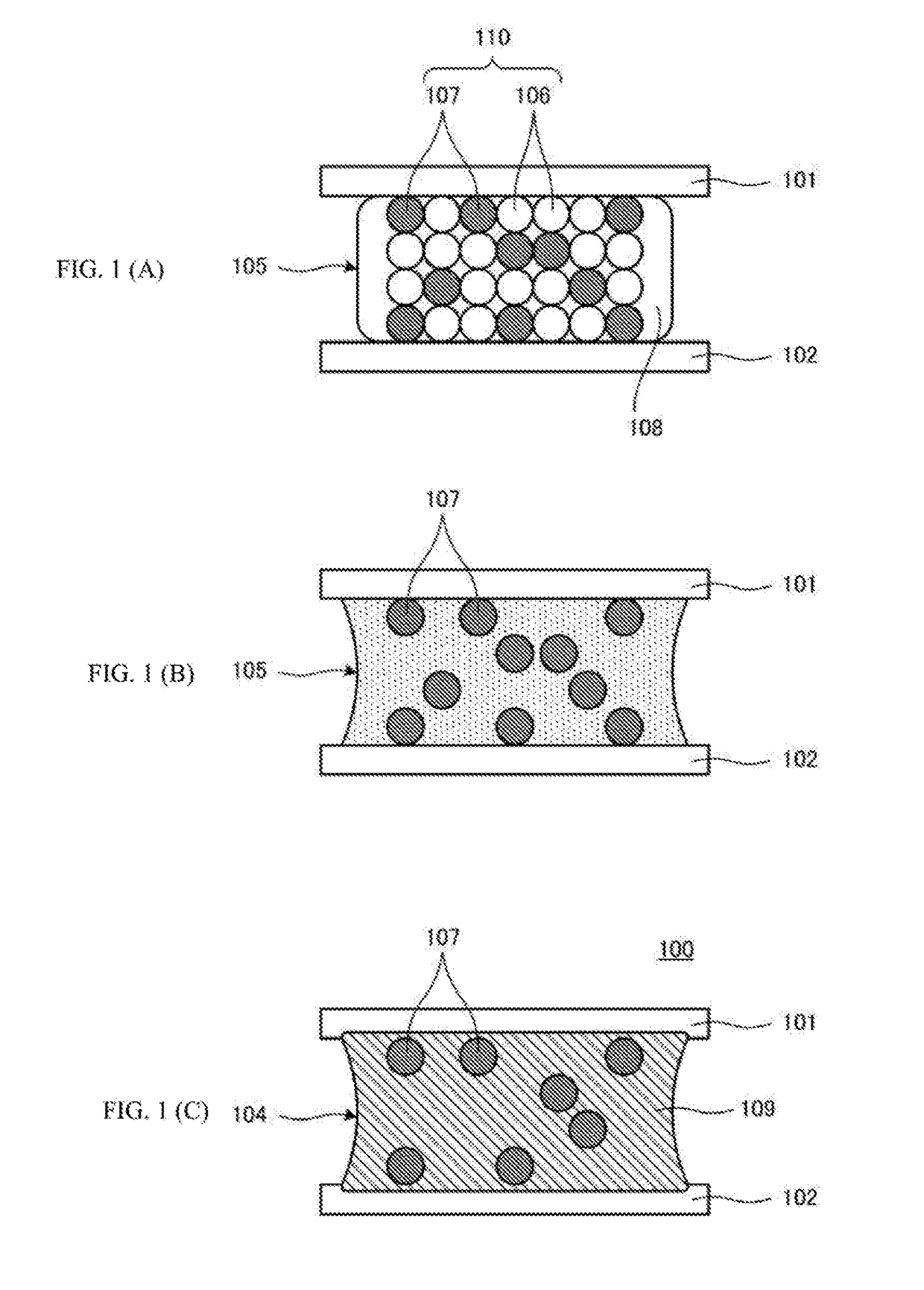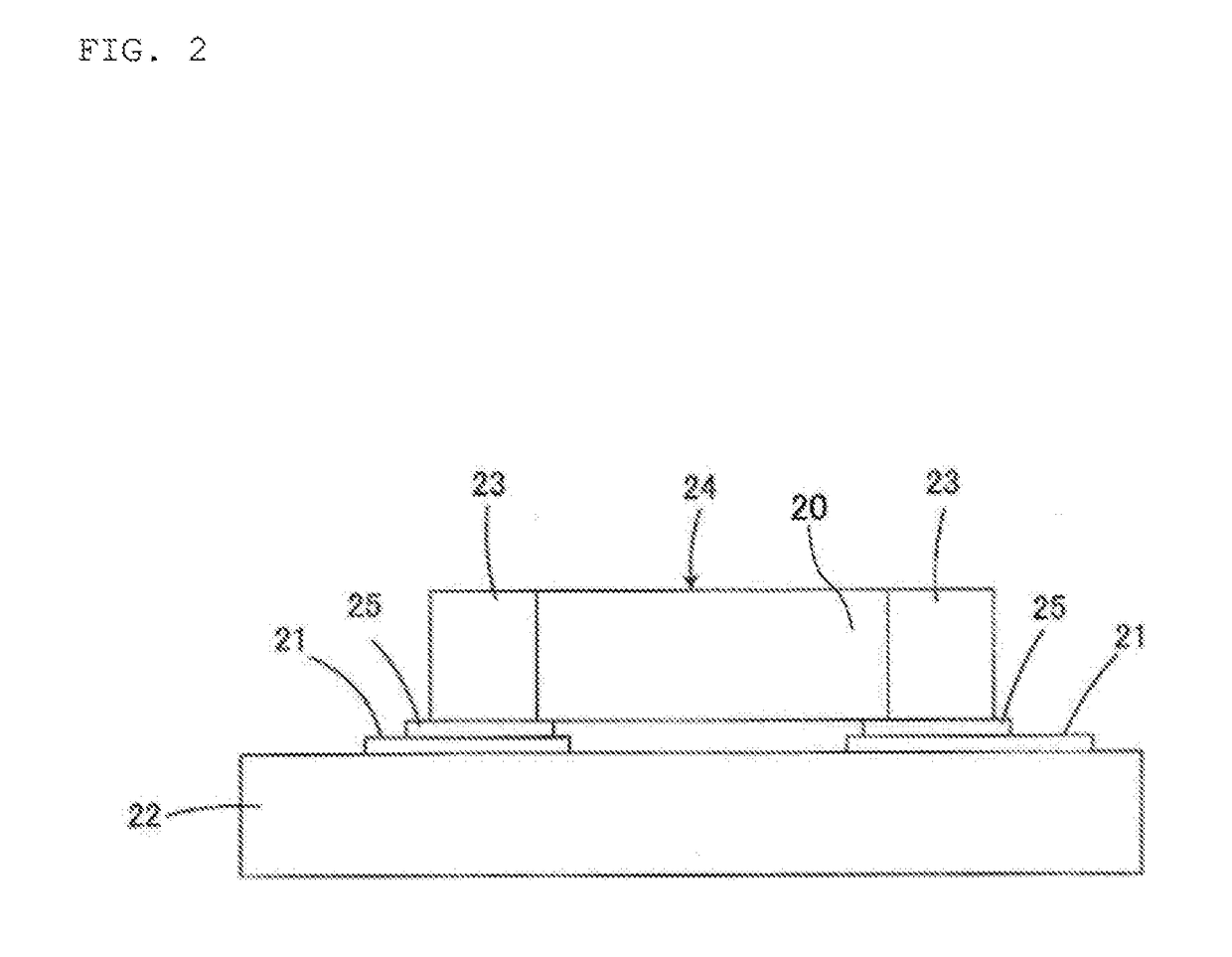Metal composition, bonding material
- Summary
- Abstract
- Description
- Claims
- Application Information
AI Technical Summary
Benefits of technology
Problems solved by technology
Method used
Image
Examples
experiment 1
[0083]In Experiment 1, multiple samples 1 to 5, 51 were prepared, which were made by mixing a metal component including a Sn powder (first metal powder) and a CuNi alloy powder (second metal powder), and a flux component including a rosin and an activator, and whether a TLP reaction proceeded or not was determined. The TLP reaction was determined by heating the multiple samples 1 to 5, 51 for 5 minutes at 250° C. under the atmospheric pressure with the use of, for example, a reflow device.
[0084]Table 1 shows the particle sizes (D50), the specific surface areas, and the amount to be reduced by hydrogen reduction for CuNi alloy powders. In addition, Table 2 shows information on the respective materials used for the multiple samples 1 to 5, 51, and the combination ratios of the respective materials.
TABLE 1Amount to beReduced bySpecificHydrogenWhether TLPSampleParticle SizeSurface AreaReduction ofReactionNumberof CuNi / μmof CuNi / (m2 / g)CuNi / (Wt %)Proceeded12.80.320.65Yes25.30.250.57Yes38....
experiment 2
[0089]In Experiment 2, multiple samples 6 to 8, 52 to 55 were prepared, which were made by mixing a metal component including a Sn powder (first metal powder) and a CuNi alloy powder (second metal powder), and a flux component including a rosin and an activator, and whether a TLP reaction proceeded or not was determined. The TLP reaction was determined by heating the multiple samples 6 to 8, 52 to 55 for 5 minutes at 250° C. under the atmospheric pressure with the use of, for example, a reflow device.
[0090]The multiple samples 6 to 8, 52 to 55 differ from the multiple samples 1 to 5, 51 used in Experiment 1 mainly in that the specific surface area of the CuNi alloy powder is 0.61 m2 / g or larger.
[0091]Table 3 shows the particle sizes (D50) of the CuNi alloy powders, the specific surface areas of the CuNi alloy powders, the amount to be reduced by hydrogen reduction for the CuNi alloy powders, the weight percent concentration of the rosin, the weight percent concentration of the activ...
experiment 3
[0100]In Experiment 3, multiple samples 9 to 12, 56, 57 were prepared, which were made by mixing a metal component including a Sn powder (first metal powder) and a CuNi alloy powder (second metal powder), and a flux component including a rosin and an activator, and whether a TLP reaction proceeded or not was determined. The TLP reaction was determined by heating the multiple samples 9 to 12, 56, 57 for 5 minutes at 250° C. under the atmospheric pressure with the use of, for example, a reflow device.
[0101]Table 5 shows the type of the rosin, the acid number of the rosin, and whether the TLP reaction proceeded or not. In addition, Table 6 shows information on the respective materials used for the multiple samples 9 to 12, 56, 57, and the combination ratios of the respective materials.
TABLE 5Whether TLPSampleReactionNumberType of RosinAcid NumberProceeded9Polymerized Rosin R-95158 to 168Yes10Acid-modified Ultra-305 to 345Yespale Rosin KR-12011Acid-modified Ultra-230 to 245Yespale Rosin...
PUM
| Property | Measurement | Unit |
|---|---|---|
| Specific surface area | aaaaa | aaaaa |
| Volume | aaaaa | aaaaa |
| Volume | aaaaa | aaaaa |
Abstract
Description
Claims
Application Information
 Login to View More
Login to View More - R&D
- Intellectual Property
- Life Sciences
- Materials
- Tech Scout
- Unparalleled Data Quality
- Higher Quality Content
- 60% Fewer Hallucinations
Browse by: Latest US Patents, China's latest patents, Technical Efficacy Thesaurus, Application Domain, Technology Topic, Popular Technical Reports.
© 2025 PatSnap. All rights reserved.Legal|Privacy policy|Modern Slavery Act Transparency Statement|Sitemap|About US| Contact US: help@patsnap.com



